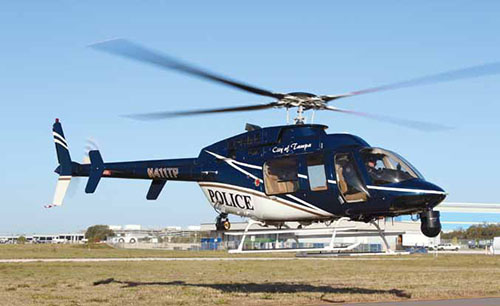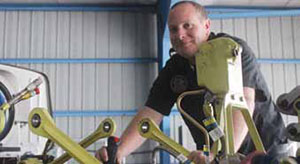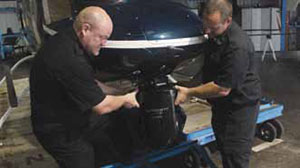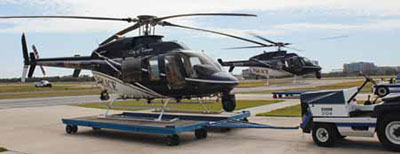
Tampa Police Department Air Support Unit


The city of Tampa, FL, is located just about in the middle of the state on its west coast. The word Tampa can have several meanings, depending on to whom you want to listen. “Tampa” may mean “sticks of fire” in the language of the Calusa, a Native American tribe that once lived south of today’s Tampa Bay. This might be a reference to the many lightning strikes that the area receives during the summer months.
In 1886, the first police force was created in Tampa by passage of a city ordinance and thus began the Tampa Police Department. Tampa’s first police force was quite small, with a chief of police replacing the city marshall, aided by an assistant chief, a sergeant and three mounted officers. Some key elements of a modern police force were instituted during that time. Standards for officer qualifications were established based on merit and physical fitness, and officers began wearing uniforms. Two detective positions were also added during this period of time. On July 15, 1887, the town of Tampa officially incorporated as a city.
Today, the city of Tampa covers almost 116 square miles and has a population of 350,000. The Tampa Police Department has more than 1,000 sworn officers and a support staff of 350 civilian positions. The department’s mission is “to reduce crime and enhance the quality of life through a cooperative partnership with all citizens.” Like most modern-day police departments, it has learned the value that helicopters bring to law enforcement.
The following is an interview with its Air Support Unit. A special note of thanks goes to Todd Curabba, chief pilot, Special Support Division, Tampa Police Aviation Unit (TPAU), and Kristopher Gunter, TPAU director of maintenance, for helping me write this article.


The Aviation Unit provides 24-hour helicopter support to patrol officers to improve the safety of the citizens of Tampa. During a vehicle pursuit, patrol officers can back off while the eye in the sky covertly follows the suspect, directing the patrol officers from a safe distance. The Aviation Unit also conducts surveillance for tracking down suspects during foot pursuits, as well as aerial surveillance for large-scale events. There are 16 personnel assigned to the Aviation Unit and the management team is comprised of a flight sergeant and chief pilot. Flight Operations has six pilots, six tactical flight officers, two aircraft mechanics and a materials coordinator. The pilots are commercial rated and are sworn law enforcement officers. Each year, the unit’s pilots fly about 2,500 hours and respond to nearly 4,000 calls for service.

HeliMx– How long has the TPAU been in operation?
TPAU– We started operations in 1969 with the purchase of two Hughes model 300 helicopters to complement the two fixed-wing aircraft already in service. The helicopters’ role in supporting officers on the ground during searches was found to be invaluable.
HeliMx– How many helicopters do you operate and what type are they?
TPAU– We currently operate two Bell 407s and one Bell model 206 L4. The Bell 407 is a single-engine helicopter that seats seven people, including the pilot. It has a flight time capability of 3.5 hours. The Bell 407 is widely used throughout the country as one of the leading helicopters for law enforcement. We feel that it has superior performance with the best speed, payload and range available in its class for our mission profiles.
HeliMx– Under what FAR do you operate?
TPAU– We fly as a Part 91 operator.
HeliMx – Does the maintenance department have a mission statement?
TPAU– “To provide outstanding maintenance support to our flight crews missions while keeping safety a paramount goal.”
HeliMx– Do you do your own maintenance or is it contracted out?
TPAU– We do all our maintenance in house and that includes some avionics work to help control costs.
HeliMx– How many people are in your maintenance department by job description?
TPAU– We have a director of maintenance, a second A&P mechanic and a materials coordinator that takes care of logistics based on any requests from the director of maintenance.
HeliMx– How many maintenance shifts do you operate?
TPAU– We operate one shift, but everyone is on call 24/7.
HeliMx– What special mission equipment do you carry if any, and how does that impact maintenance procedures?
TPAU– Our helicopters are equipped with a Gyrocam DS15. This tool is critical for law enforcement operations. The camera has a 40-power zoom lens, which provides bright color video to officers in the helicopters during the day. Even in the darkness of the night, criminals can’t escape. After dark, the camera technology uses an infrared lens. All of the video is sent to commanders on the ground via the BMS Helicoder 4. Downlink data is seen on mobile devices, command and tactical vehicles, as well as fire trucks and marine vessels. All video is sent through the City of Tampa network and is viewed in district offices and police headquarters. Our downlink system is interoperable with the Hillsborough County sheriff’s office. This is very useful for sharing real time information.
All pilots and tactical flight officers are trained and certified in the use of night-vision goggles. Flight crews use this tool for situational awareness. During night operations, this tool is essential to aid the pilot in preparing for in-flight emergencies. With aided vision, the pilot has a better chance to identify suitable landing areas while avoiding light poles and power lines. This improves the safety of the crew and our community. The Aviation Unit utilizes the ITT F4949 Gen III night-vision goggles.
Each helicopter is also equipped with a state-of-the-art aerial photo aid for disaster missions called Avalex. This is a GPS-based map system that allows the flight crew to enter an address, intersection or any named location, and the system provides directions from the aircraft’s current position to that point. This technology was purchased through a federal grant from the Urban Area Security Initiative for use during a natural disaster or terrorist attack. Locations can be quickly marked and saved to highlight a piece of evidence or a targeted search area. The map system is updated annually to accurately reflect new roads and other construction. It also provides longitude/latitude data which provides information to marine units on the exact location of a boat in distress or hazard to navigation.
The helicopters are also equipped with Universal Searchlights model SX5 with the SLASS system. They are also equipped with cargo hooks for Bambi Bucket operations and support tactical missions with Tyler skid-mounted platforms. This equipment is on a scheduled preventative maintenance list and each component is sent out for inspection based on manufacturer recommendation.
HeliMx– In a typical 30-day period, how many and what type of inspections do you normally perform?
TPAU– We have our aircraft on a progressive inspection from the manufacturer. We will do one or two event inspections a month on the aircraft, depending on flight hours.
HeliMx– What maintenance tasks are outsourced to an MRO or back to the OEM and why?
TPAU– Big installs and paint work. We do all other maintenance in house, including 5,000-hour inspections.
HeliMx– From start to finish, what is your procedure for doing a maintenance repair or inspection?
TPAU– Gather the information on the squawk or inspection due. Discuss a plan of action with the other A&P mechanic to correct the discrepancy. Perform the fix or inspection. Make a log entry. Operations then checks and cleans the aircraft. Return the aircraft to service and update maintenance tracking information.
HeliMx– Of all the maintenance tasks that you perform, which have you found to be the most labor intensive and time consuming?
TPAU– NVIS cockpit installations. We are currently about to upgrade the panels and use a vendor that is more maintenance friendly.
HeliMx– Do you have any lessons learned or tips you can share with our readers on a particular task that you found can improve on the maintenance process in the way of saving time, cost, materials, etc?
TPAU– One important thing we learned is you need to choose the right NVG company for your aircraft. We used low bid, and the panel is very hard to maintain as we have had lots of down time with the modifications not being manufacturer approved. We had a transponder go bad. We sent the transponder to the vendor to get the NVG demodified, and then sent it to the manufacturer for repair. After repair, it went back to the vendor to get NVG reinstalled. This process can take well over a month and it also voids the warranty on the transponder since it was modified after the repair. Use a manufacturer approved in modifying instruments for NVG operations. This way you can send the instruments straight to the manufacturer for repair and keep your warranties and eliminate down time.
HeliMx – Who performs preflight and post-flight inspections on the aircraft?
TPAU– We do daily inspections on our work days. The pilots do the pre- and post-flight checks on every flight.
HeliMx– Who has the responsibility for assigning aircraft to flight operations?
TPAU– The maintenance department controls the flight hours. This keeps us on budget. We can schedule maintenance a long way ahead to help space it out so no more than one aircraft is down at a time. Going down from five helicopters to three helicopters and still flying the same flight hours has been a challenge, but with good maintenance scheduling, we can get the job done with 24-hour/365-day availability.
HeliMx– Describe what takes place during a typical day in the life of the maintenance department.
TPAU– Check for Squawks from the night before. I then check the flight times and input them into maintenance tracking. We then go out and fix any squawks and accomplish any scheduled inspections.
HeliMx– If you were looking to hire a new mechanic, what skill sets would you be most interested in?
TPAU – Aside from having an A&P license with some helicopter experience, I would value someone with good troubleshooting skills.
HeliMx– Have you started any initiatives regarding the push towards a safety management system (SMS)?
TPAU– Yes, we use the ALEA accreditation standards as a base line for our safety program. We recently received an award from our insurance company for safety, and we also received the International Association of Chiefs of Police Excellence in Police Aviation Award.
Should you ever have the occasion to visit Tampa, whether for business or pleasure, you can rest assured that your safety is in the hands of a great police department and that safety is enhanced by their Air Support Unit.
